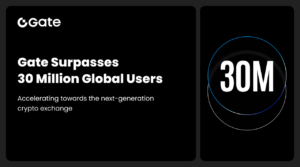Insider Trading and Market Manipulation in Cryptocurrencies

Insider Trading and Market Manipulation in Cryptocurrencies
Introduction
Insider trading and market manipulation are significant concerns in the cryptocurrency market. This article examines the implications of these illegal activities, the challenges they pose, and potential solutions to address insider trading and market manipulation effectively.
Understanding Insider Trading in Cryptocurrencies
Insider trading involves individuals with privileged information using it to gain an unfair advantage in trading cryptocurrencies. The following factors contribute to the challenges of detecting and preventing insider trading:
- Lack of Regulation: The decentralized and global nature of cryptocurrencies makes it difficult to establish comprehensive regulations to prevent insider trading effectively.
- Anonymity: Cryptocurrencies provide a certain level of anonymity, making it challenging to identify individuals engaged in insider trading activities.
Market Manipulation in the Crypto Space

Market manipulation involves intentional actions to distort the price or volume of cryptocurrencies for personal gain. The implications of market manipulation are far-reaching:
- Price Volatility: Manipulative activities can create artificial price fluctuations, affecting market stability and investor confidence.
- Misleading Information: Market manipulation often involves spreading false or misleading information to influence market sentiment and deceive investors.
Regulatory Challenges and Solutions
Addressing insider trading and market manipulation in cryptocurrencies requires a multi-faceted approach involving regulatory bodies, exchanges, and market participants. Potential solutions include:
- Enhanced Regulatory Framework: Establishing robust regulatory frameworks specific to cryptocurrencies to deter and penalize insider trading and market manipulation.
- Increased Transparency: Encouraging exchanges to implement transparent practices, such as real-time reporting of trades and orders, to detect suspicious activities and foster market integrity.
Pump and Dump Schemes
Pump and dump schemes involve artificially inflating the price of a cryptocurrency through coordinated buying, followed by selling when the price reaches a peak. Additional points to consider include:
- Coordinated Groups: Examining the role of coordinated groups or individuals in orchestrating pump and dump schemes and the methods they use to manipulate the market.
- Social Media Influence: Investigating the impact of social media platforms in promoting pump and dump schemes and the responsibility of platform providers in mitigating such activities.
Wash Trading
Wash trading involves creating artificial trading volume by executing buy and sell orders for the same cryptocurrency. Additional points to consider include:
- Impact on Market Perception: Exploring the effects of wash trading on market perception and the challenges in identifying and distinguishing genuine trading volume from manipulated volume.
- Automated Wash Trading: Examining the use of automated trading bots or algorithms in facilitating wash trading and the potential countermeasures to detect and prevent such activities.
Front Running
Front running occurs when individuals or entities with access to privileged information execute trades ahead of others to profit from the anticipated price movement. Additional points to consider include:
- Regulatory Frameworks: Evaluating the adequacy of existing regulatory frameworks in addressing front-running activities and the need for specific regulations in the crypto market.
- Preventing Information Leakage: Discussing measures to prevent information leakage and ensure fair market access for all participants, reducing the potential for front running.
Market Surveillance and Detection
Enhancing market surveillance and detection mechanisms can help identify and prevent insider trading and market manipulation in real-time. Additional points to consider include:
- Advanced Analytics: Utilizing advanced analytics tools and algorithms to detect patterns, anomalies, and suspicious activities in trading data.
- Collaboration with Exchanges: Establishing closer partnerships between regulatory bodies and exchanges to share data and collaborate on monitoring and investigating market manipulation cases.
Investor Education and Awareness
Educating investors about the risks and signs of insider trading and market manipulation can empower them to make informed decisions. Additional points to consider include:
- Educational Campaigns: Launching educational campaigns to raise awareness about common tactics used in insider trading and market manipulation and providing guidance on how to identify and report suspicious activities.
- Promoting Due Diligence: Encouraging investors to conduct thorough due diligence on cryptocurrency projects, teams, and market conditions before making investment decisions.
By exploring these additional subtopics, we can provide a more comprehensive understanding of pump and dump schemes, wash trading, front running, market surveillance and detection, and investor education and awareness in the context of insider trading and market manipulation in cryptocurrencies.
Regulatory Enforcement and Penalties
Strengthening regulatory enforcement and imposing significant penalties can act as a deterrent to insider trading and market manipulation. Additional points to consider include:
- Enforcement Agencies: Allocating resources to regulatory agencies responsible for investigating and prosecuting cases of insider trading and market manipulation in the crypto space.
- Severe Penalties: Imposing severe penalties, including fines and imprisonment, on individuals found guilty of engaging in insider trading or market manipulation.
Whistleblower Protection
Establishing whistleblower protection programs can encourage individuals to come forward and report instances of insider trading and market manipulation. Additional points to consider include:
- Anonymity and Confidentiality: Ensuring the anonymity and confidentiality of whistleblowers to protect them from potential retaliation.
- Incentives and Rewards: Offering incentives or rewards to whistleblowers who provide valuable information leading to successful enforcement actions.
Technology-Based Solutions
Leveraging technological advancements can assist in the detection and prevention of insider trading and market manipulation. Additional points to consider include:
- Machine Learning and Artificial Intelligence: Utilizing machine learning algorithms and AI-based systems to analyze large volumes of trading data and identify suspicious patterns or irregularities.
- Blockchain-based Transparency: Exploring the use of blockchain technology to create transparent and immutable records of trading activities, reducing the risk of manipulation.
Global Collaboration and Information Sharing
Promoting global collaboration and information sharing among regulatory bodies can enhance efforts to combat insider trading and market manipulation. Additional points to consider include:
- International Cooperation: Facilitating cooperation between regulatory bodies across different jurisdictions to share information and coordinate investigations.
- Standardized Reporting: Encouraging the adoption of standardized reporting formats for crypto-related transactions to facilitate cross-border information sharing.
Investor Protection Measures
Implementing investor protection measures can help safeguard individuals from the negative impacts of insider trading and market manipulation. Additional points to consider include:
- Robust Disclosure Requirements: Requiring companies and projects to provide accurate and timely information to investors, ensuring transparency in the crypto market.
- Investor Education Initiatives: Promoting educational initiatives to educate investors about the risks associated with insider trading and market manipulation and empowering them to make informed investment decisions.
Regulatory Compliance and Auditing
Promoting regulatory compliance and conducting regular audits can help identify and prevent instances of insider trading and market manipulation. Additional points to consider include:
- Compliance Monitoring: Implementing mechanisms to monitor compliance with regulatory requirements, such as Know Your Customer (KYC) and Anti-Money Laundering (AML) regulations, to deter illicit activities.
- Independent Audits: Conducting independent audits of cryptocurrency exchanges and trading platforms to ensure adherence to fair market practices and detect any suspicious activities.
Decentralized Exchanges and Market Integrity
Exploring the role of decentralized exchanges (DEXs) in ensuring market integrity and reducing the risk of insider trading and market manipulation. Additional points to consider include:
- Smart Contract Audits: Conducting thorough audits of smart contracts deployed on DEXs to identify vulnerabilities and prevent manipulation of trading rules.
- Community Governance: Leveraging decentralized governance models to empower community members in monitoring and reporting suspicious activities on DEXs.
Enhanced Market Surveillance Technologies
Investing in advanced market surveillance technologies can enhance the ability to detect and respond to instances of insider trading and market manipulation. Additional points to consider include:
- Real-Time Monitoring: Implementing real-time monitoring systems that analyze trading data and detect anomalies or suspicious patterns promptly.
- Data Integration: Integrating data from multiple sources, such as exchanges, social media platforms, and news feeds, to gain a comprehensive view of market activities.
Industry Self-Regulation and Best Practices
Encouraging self-regulation within the cryptocurrency industry can promote responsible market practices and discourage insider trading and market manipulation. Additional points to consider include:
- Code of Conduct: Developing a code of conduct that outlines ethical standards and best practices for market participants, including cryptocurrency projects, exchanges, and investors.
- Industry Associations: Establishing industry associations to facilitate collaboration, information sharing, and the development of self-regulatory frameworks.
Continuous Regulatory Adaptation
Adapting regulatory frameworks to keep pace with evolving technologies and market dynamics is crucial to effectively address insider trading and market manipulation. Additional points to consider include:
- Regulatory Sandboxes: Creating regulatory sandboxes to allow for controlled experimentation and innovation while ensuring compliance with investor protection and market integrity.
- Ongoing Dialogue: Maintaining an ongoing dialogue between regulators, industry stakeholders, and academia to stay informed about emerging trends and challenges in the crypto market.
Public-Private Partnerships for Market Integrity
Promoting public-private partnerships can foster collaboration in maintaining market integrity and combating insider trading and market manipulation. Additional points to consider include:
- Information Sharing: Facilitating the sharing of information and best practices between regulatory bodies, industry associations, and private companies to collectively address the challenges.
- Joint Investigations: Conducting joint investigations involving regulators, law enforcement agencies, and industry experts to efficiently uncover and prosecute instances of insider trading and market manipulation.
Continuous Education and Professional Development
Encouraging continuous education and professional development in the crypto industry can enhance awareness and knowledge of insider trading and market manipulation. Additional points to consider include:
- Certification Programs: Establishing certification programs for professionals in the crypto industry to enhance their understanding of market integrity and compliance.
- Research and Publications: Supporting research initiatives and the publication of scholarly articles to advance knowledge and best practices in combating insider trading and market manipulation.
By exploring these additional subtopics, we can provide a more comprehensive understanding of public-private partnerships for market integrity and the importance of continuous education and professional development in addressing insider trading and market manipulation in cryptocurrencies.
Conclusion
Insider trading and market manipulation undermine the integrity and fairness of the cryptocurrency market. By implementing enhanced regulatory frameworks, promoting transparency, and fostering investor education, stakeholders can work together to minimize the occurrence of insider trading and market manipulation, creating a more trustworthy and sustainable crypto ecosystem.







